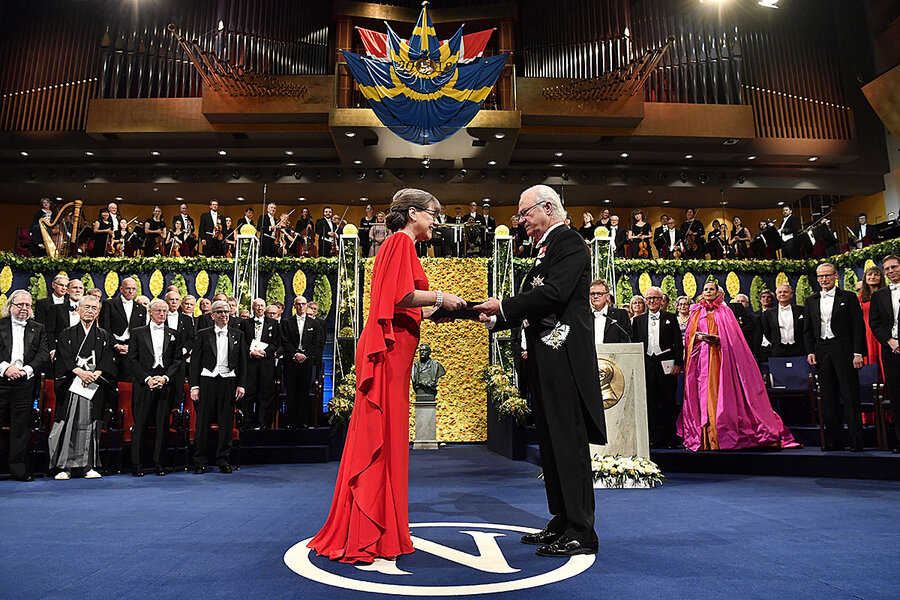Finally, women see some science recognition
Loading...
The announcement of the Nobel Prizes always promises a big week for science. Whom the Norwegian Nobel Committee chooses to honor says a lot about where science is going.
This year’s awards, offer a window into more than just scientific development. The 2018 Nobel Prize will forever stand as a historic marker in the evolution of scientific recognition.
For only the third time in history, a woman, Donna Strickland, received the Nobel Prize for Physics. She shares the prize with Arthur Ashkin and Gérard Mourou for their work in the manipulation of lasers and the development of optical tweezers.
And for only fifth time ever, the trio of scientists sharing the Nobel Prize for Chemistry also includes a woman, Frances H. Arnold. The Nobel committee awarded Dr. Arnold half the share of the prize for her work on “the directed evolution of enzymes.” George P. Smith and Sir Gregory P. Winter each received a quarter share for their work in “phage display of peptides and antibodies.”
Women in science have long struggled to gain recognition. Recent films and books, such as “Hidden Figures” have opened the public’s eyes to silent contributions that women have made to science throughout history.
Reports that a moderator rejected an attempt to create a Wikipedia article about Dr. Strickland back in May further underscore the societal tendency to minimize the scientific achievements of women. It was not until Strickland received one of the most prestigious prizes in world that the online encyclopedia granted the optical physicist her own page.
For a more in depth look at the struggles facing women in science, be sure to check out this article from the Monitor's Amanda Pauslon.






